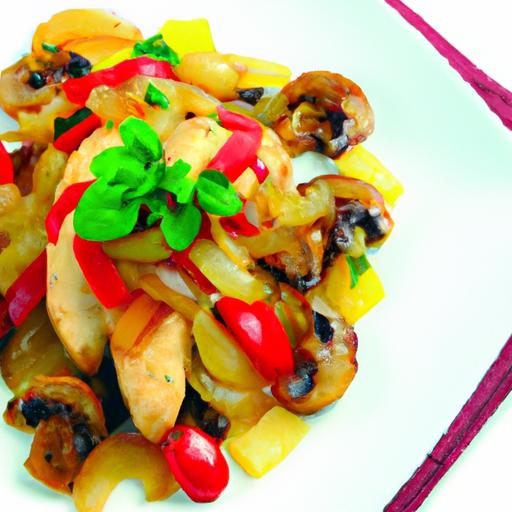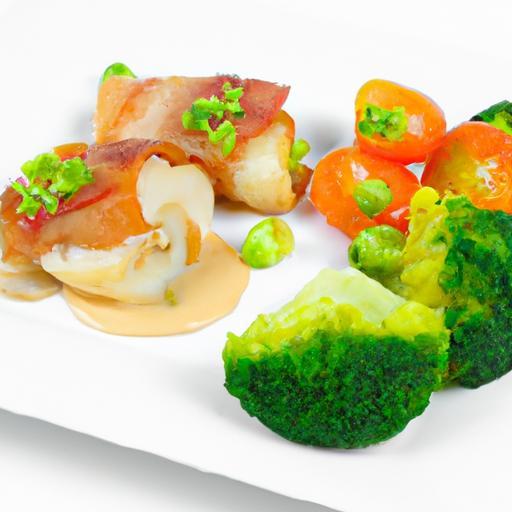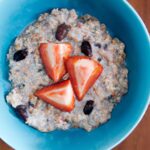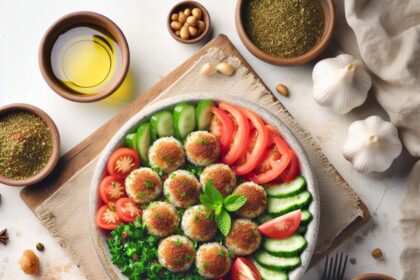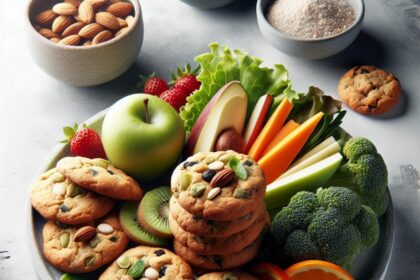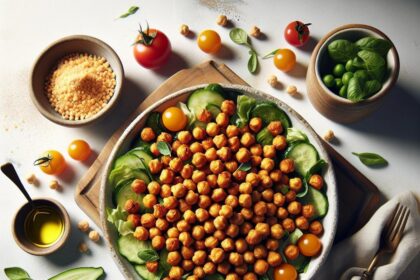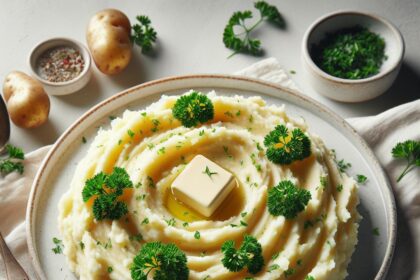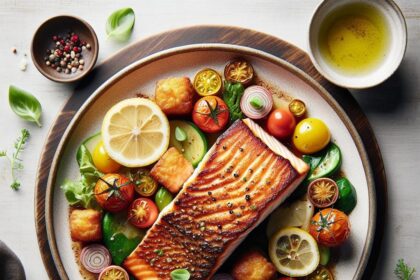In the whirlwind of family life, leftovers often become the unsung heroes of mealtime-quick, convenient, and packed with the promise of a satisfied little appetite. But when it comes to reheating those tasty extras, a little know-how can turn a simple plate of food into a safe and nourishing meal that keeps kids not just happy, but healthy too. Welcome to “Safe & Smart: Reheating Leftovers for Happy, Healthy Kids,” where we blend science, savvy tips, and a sprinkle of creativity to help you transform yesterday’s dinner into today’s stellar snack-without compromising on safety or flavor. Let’s dive in and make every bite count!
Safe & Smart: Reheating Leftovers for Happy, Healthy Kids hinges not only on the food but also on the smart choices made behind the scenes-like selecting the perfect container to warm those meals evenly and safely for your little ones. Containers play an unsung hero’s role, influencing microwave performance and preserving the vibrant flavors and nutrients kids love. Let’s dive into how thoughtful container choices and reheating techniques can transform your leftover game into a lunchtime win, every time.
Prep and Cook Time
- Prep Time: 10 minutes
- Cook/Reheat Time: 3-5 minutes (depending on microwave wattage and portion size)
Yield
- Serves 1-2 kids comfortably (adjust quantities as needed)
Difficulty Level
- Easy
Ingredients
- Microwave-safe containers (glass or BPA-free plastic with vented lids)
- Leftover cooked meals (e.g., pasta, veggies, chicken, rice)
- Fresh herbs or a squeeze of lemon (optional, for garnish)
- Snack components: whole-grain crackers, cut veggies, cheese cubes, hummus
Instructions
- Choose a suitable container: Use a microwave-safe glass container with a vented lid or BPA-free plastic containers designed for reheating. These options distribute heat evenly and minimize plastic leach risks.
- Portion carefully: Small, flat portions reheat faster and more evenly-avoid stacking thick piles to prevent cold spots.
- Prepare the meal for reheating: Loosen lids slightly or use vented lids to allow steam to escape safely without drying food out.
- Microwave on medium power: Start reheating your leftovers at 50-70% power to heat the food gently and reduce temperature spikes, which preserves nutrients and texture.
- Stir or rotate halfway: At the halfway mark, stir the food or rotate the container if your microwave doesn’t have a turntable. This encourages consistent warming.
- Check temperature: Ensure food reaches 165°F (74°C) to guarantee safety. Use a food thermometer if possible.
- Let it rest: Stand the dish for 1-2 minutes after microwaving. Residual heat evens out temperatures and finishes the warming process.
- Add fresh touches: Brighten reheated dishes with a sprinkle of fresh herbs, a dash of lemon juice, or a drizzle of olive oil for flavor and a nutrient boost.
- Prep snacks alongside: Assemble colorful and crunchy sides like carrot sticks, cheese cubes, and hummus in kid-friendly containers for a balanced, inviting meal.
Chef’s Notes
- Container Tips: Avoid metal, single-use plastics, or non-vented containers that trap steam and cause uneven heating or unsafe pressure buildup.
- Microwave Power: Medium power prevents overheating and nutrient loss. If reheating soups or sauces, stir more frequently to avoid hot spots.
- Leftover Storage: Store meals in portion-sized containers right after cooking to save time and minimize handling during reheating.
- Nutrient Preservation: Using glass containers limits plastic migration and heating time, helping to maintain vitamins and flavor integrity.
- Make-ahead Snacks: Prepare a batch of snack boxes with fresh fruits, veggie sticks, and homemade dips to keep kids/snacks ready-to-go whenever hunger strikes.
Serving Suggestions
Present leftovers with fresh-cut veggies arranged like a rainbow on the side. Garnish pasta or rice dishes with a sprinkle of finely chopped parsley or basil for a pop of green that appeals to both eyes and taste buds. A subtle lemon wedge adds brightness that awakens flavors and encourages kids to explore new tastes safely.
| Nutrient | Estimate per Serving |
|---|---|
| Calories | 250 kcal |
| Protein | 12 g |
| Carbohydrates | 30 g |
| Fat | 8 g |
Learn more about safe food reheating techniques from the FDA for peace of mind on safety standards. For creative leftover recipes that delight kids and simplify family life, check out our internal Kid-Friendly Meals from Leftovers article.

Q&A
Q&A: Safe & Smart – Reheating Leftovers for Happy, Healthy Kids
Q1: Why is reheating leftovers a good idea for busy families?
A1: Reheating leftovers saves time and reduces waste, making mealtime easier and more sustainable. Plus, it ensures kids get nutritious meals without the stress of cooking from scratch every day.
Q2: How can I make sure leftovers are safe to eat for my kids?
A2: Safety starts with prompt refrigeration-cool leftovers within two hours of cooking. When reheating, ensure the food reaches an internal temperature of 165°F (74°C) to kill any lurking bacteria.
Q3: What are the best methods to reheat food for children?
A3: The microwave is quick and convenient, but stir food halfway through for even heat. Oven reheating works well for leftovers like pizza or casseroles. Avoid reheating multiple times to keep meals fresh and safe.
Q4: Can reheating affect the nutritional value of leftovers?
A4: Some nutrients, like vitamin C, may diminish slightly with reheating, but the overall meal remains nutritious. To maximize health benefits, pair reheated items with fresh fruits or veggies.
Q5: How do I reheat different foods safely?
A5: Soups and stews should be boiled to steaming hot. Rice and pasta need thorough heating, as they can harbor bacteria. Meat and poultry leftovers should be steaming hot throughout. Remember: when in doubt, heat it thoroughly!
Q6: Any tips for making reheated meals appealing to kids?
A6: Brighten up the plate with a sprinkle of cheese, a dash of herbs, or a side of colorful veggies. Sometimes, turning leftovers into a fun new dish-like a wrap or quesadilla-can excite even the pickiest eaters.
Q7: How often is it safe to reheat leftovers?
A7: Ideally, reheat only once. Repeated reheating can encourage bacteria growth and reduce food quality, so portion leftovers wisely before storing.
Q8: Is reheating microwaved food safe for kids?
A8: Absolutely! Just make sure to cover the food, stir it well, and check the temperature before serving to avoid hot spots and ensure even heating.
Q9: What common mistakes should parents avoid when reheating leftovers?
A9: Don’t leave food out too long before refrigerating, skip reheating or heat unevenly, or store leftovers beyond 3-4 days. Safe steps keep kids healthy and happy!
Q10: In a nutshell, what’s the secret to safe, smart leftover meals for kids?
A10: Cool promptly, store properly, reheat thoroughly, and add a touch of creativity. With these mindful habits, leftovers transform into delicious, nutritious meals that kids love-and parents trust.
Final Thoughts
As we wrap up our journey through the art and science of reheating leftovers, remember: a little care goes a long way in turning yesterday’s meals into today’s nutritious delights. By reheating safely and smartly, you’re not just preserving flavor-you’re nurturing happy, healthy kids who can enjoy every bite without a worry. So, next time you reach for that container in the fridge, embrace these tips and turn leftovers into another opportunity for love, health, and family smiles. After all, good food-and good habits-are the best ingredients for growing strong and thriving little ones. Stay safe, stay smart, and savor every moment!